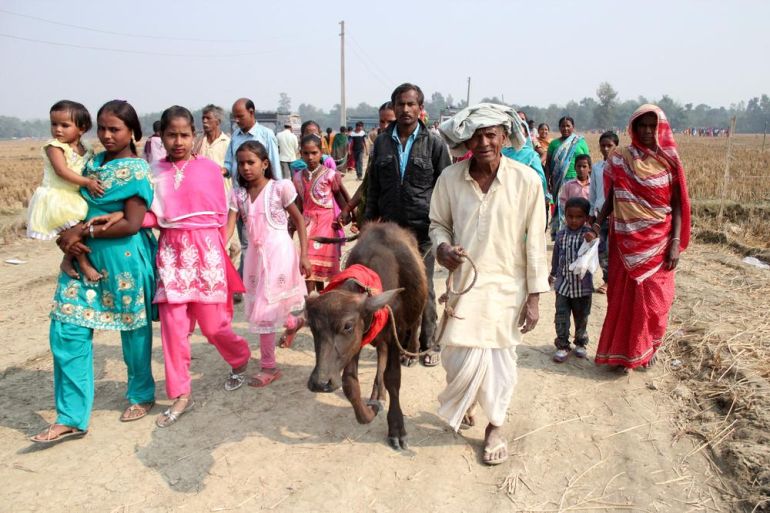In Pictures
In Pictures: Nepal’s slaughter festival
Festival where thousands of animals are slaughtered every five years is considered to be one of largest in the world.

Amid worldwide protests, online campaigns and petitions by animal rights groups, the town of Bariyarpur in southeastern Nepal witnessed one of the world’s goriest festivals – the Gadhimai Festival.
Celebrated every five years, it is considered to be one of the largest animal sacrifices in the world. In 2009, according to reports, more than 250,000 animals including goats, sheep, water buffaloes, chickens, rats, pigeons, and pigs were slaughtered during the festival, which is celebrated by some Hindu communities who believe these sacrifices will appease the goddess of power, Gadhimai.
This year, the Indian government stopped the movement of buffaloes across the border, leading to a smaller number of them on the slaughter ground.
“The Indian government should not stop buffaloes, they are interfering in our religion and it is very bad, but let me tell you we will never stop, we will continue. This year we are seeing more participation of people than previous years,” said Dihrender Singh, 41, one of the organisers of the Gadhimai festival.
Around five million devotees have flocked from the Indian states of Bihar, Uttar Pradesh and many parts of Nepal for this festival at the temple of Gadhimai in Bariyarpur, 145km from the capital Kathmandu.
Silent protests were held by animal rights groups outside the venue of sacrifice at Bariyarpur temple, as they tried to stop the sacrifice of animals.
“This festival should stop. God doesn’t want the blood of these innocent animals. We have been petitioning and campaigning to ban this festival but all in vain. This is sad and the appalling cruelty cannot be imagined. All this is done in the name of pleasing a goddess,” said Manoj Gautam, an animal rights activist who travelled from Kathmandu to protest.
While the activists staged protests outside the temple, the main festival began at dawn with a ceremonial sacrifice at the main temple with people chanting “Long live Gadhimai”.
“Despite all the protests, the festival continued and this shows the divine power of Gadhimai. She solves all the problems. If you don’t have a son or you don’t have enough money, an offering to her will solve all these issues,” said Naveen Tiwari, a priest.
More than 300 men with the license to slaughter and armed with big knives, locally known as khukri, entered the enclosure where thousands of animals were kept and started hacking the animals to death. They are paid 25 Nepali rupees ($0.26) to sacrifice one big animal. The beliefs associated with the festival ensures participation by non-professional butchers as well.
“I don’t feel guilty about slaughtering the animals because it will make Gadhimai very happy. She has given my family a very good life and this is my way of saying thank you to her. People make money by slaughtering animals, but for me, this is also spiritual satisfaction. I have beheaded around 59 buffaloes till now,” said Samu Patel, 52, a brick-kiln labourer from a nearby village who obtained a license to slaughter animals at the festival.













